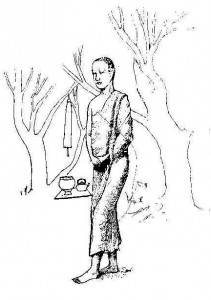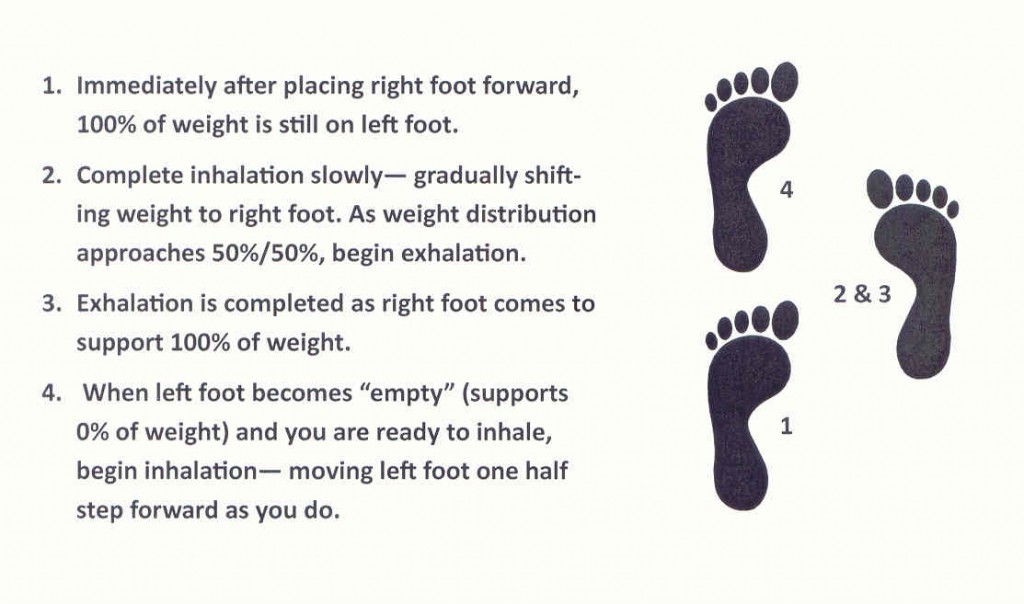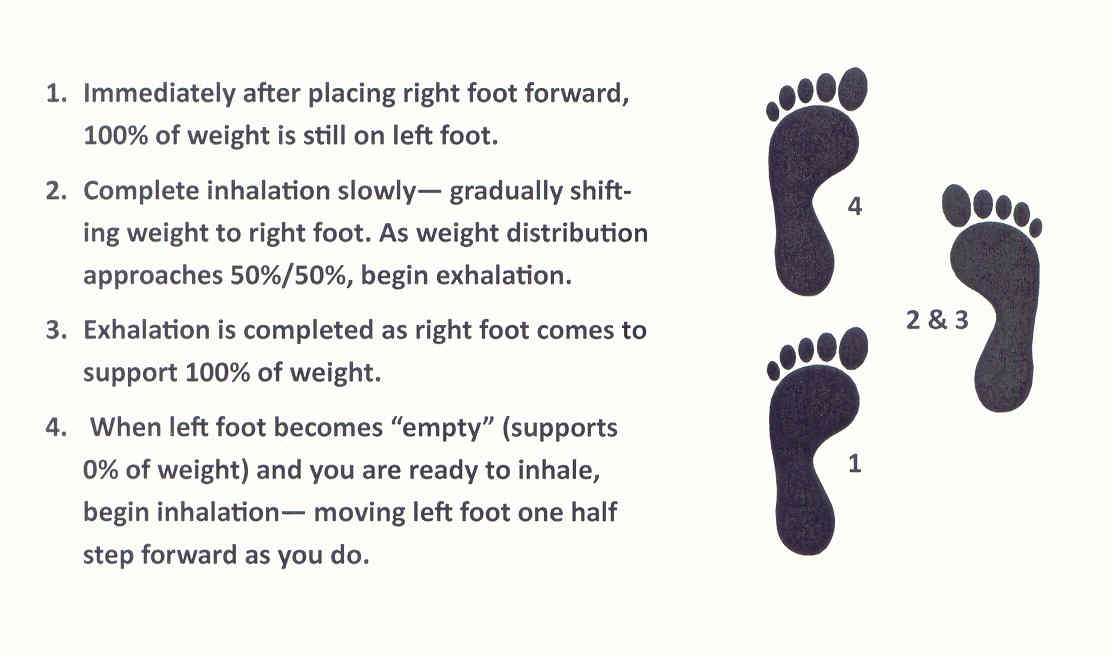Kinhin is walking meditation practice. We practice Present Moment Awareness when walking in kinhin.Searching inside Buddhism, we soon learn that kinhin is an extremely important practice. It is the thread that binds all of our practices together.
A single, isolated practice period is like a single battery; it produces a negligible current. But string a number of batteries end to end, in series with one another, and the current becomes strong. Kinhin strings our practice periods together, and our chi, our vital energy, becomes strong.
It is difficult to make progress when sitting in meditation for about half an hour if that one sitting is an isolated practice. In order to make progress, we have to begin the second sitting with the momentum built up in the first sitting, and so on. That is where kinhin shows its greatest power.
If we can maintain our sitting meditation practice during kinhin, three thirty minute sittings become a ninety minute sitting. At a retreat, a day of sitting adds up to one very long, unbroken sitting and a week of sitting, according to the Buddha, may be all we need. See The Satipatthana Sutta which forms a part of the Majjhima Nikaya (Middle Length Discourses of the Buddha), (sutta number 10 in the third edition, 2005).
Kinhin is the Japanese transliteration of the Chinese term jinshing (pinyin) which translates as Marching the Sutras. The Sutras are Buddhist sermons spoken by the Buddha or enlightened masters.
A kinhin is simply a walk with the hands held in a position known as the shashu position. A fist is made over the right thumb, i.e., the thumb overlies the palm and four fingers overlie the thumb. The right elbow is bent more than ninety degrees and the right hand is placed in the center of the chest. The left hand is then placed flat over the right hand.
When performed with a group, kinhin is performed in a single file procession, typically led by the timer who carries a small hand bell, called inkin, that is used to signal the beginning and the ending of the kinhin.
When the inkin rings at the end of a formal sitting meditation period, the practitioners rise and turn with their backs to the wall to face their fellow practitioners.
In most zendos, the bell rings a second time when everyone is standing with hands palm-to-palm (the “gassho” position). Everyone performs a bow, bending forward about 30 to 45 degrees from the waist, upon hearing the second ringing of the bell.
Such bowing is an expression of gratitude to the other practitioners for being there.
The timer then rings the bell a third time and the kinhin begins. In most zendos, the practitioners turn to their left and begin walking at a normal pace, staying in a single file procession. The path of the kinhin thus follows a clockwise route around the zendo. It is customary to keep the Buddha statue on the altar to one’s right so the kinhin may be counterclockwise in some zendos.
The hands are shifted from the gassho position to the shashu position when the kinhin begins.
The kinhin will last for six or seven minutes and another sounding of the bell ends the kinhin. If we are directly in front of our cushion or chair when the bell sounds, we don’t stop. We circle the zendo one more time. If we have just passed it when the bell sounds, we don’t go back to it. In most cases, we will not be near our cushion when the bell rings; we just maintain the pace and stop when we get there. The simple rule is to stop only when everyone in front of us has stopped.
Another bell sounds when everyone has stopped in front of their spot, facing each other. That is the signal to turn around and begin the next sit which will begin with three bells a few seconds apart. We adjust our posture during the ringing of the three bells, and then maintain that posture throughout the sitting period.
Of course, the length of time, the walking speed, and other variables can vary from zendo to zendo.
Credits: How To Practice Zen









